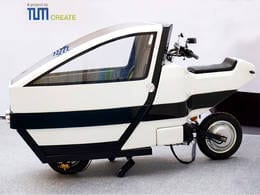
- Image via Wikipedia
Newly designed giant gravel batteries could be the solution to the on-off nature of wind turbines and solar panels. By storing energy when the wind stops blowing or the sun stops shining, it is hoped the new technology will boost to renewable energy and blunt a persistent criticism of the technology – that the power from it is intermittent.
Electricity cannot be stored easily, but a new technique may hold the answer, so that energy from renewables doesn’t switch off when nature stops playing ball. A team of engineers from Cambridge think they have a potential solution: a giant battery that can store energy using gravel.
“If you bolt this to a wind farm, you could store the intermittent and relatively erratic energy and give it back in a reliable and controlled manner,” says Jonathan Howes, founder of Isentropic and previously an engineer at the Civil Aviation Authority.
The Labour government committed to cutting the country’s carbon emissions by 34% by 2020 and 80% by 2050, both relative to 1990 levels. To achieve this, ministers outlined plans to build thousands of wind turbines by 2020. The only economically viable way of storing large amounts of energy is through pumped hydro – where excess electricity is used to pump water up a hill. The water is held back by a dam until the energy is needed, when it is released down the hill, turning turbines and generating electricity on the way.
Isentopic claims its gravel-based battery would be able to store equivalent amounts of energy but use less space and be cheaper to set up. Its system consists of two silos filled with a pulverised rock such as gravel. Electricity would be used to heat and pressurise argon gas that is then fed into one of the silos. By the time the gas leaves the chamber, it has cooled to ambient temperature but the gravel itself is heated to 500C.
After leaving the silo, the argon is then fed into the second silo, where it expands back to normal atmospheric pressure. This process acts like a giant refrigerator, causing the gas (and rock) temperature inside the second chamber to drop to -160C. The electrical energy generated originally by the wind turbines originally is stored as a temperature difference between the two rock-filled silos. To release the energy, the cycle is reversed, and as the energy passes from hot to cold it powers a generator that makes electricity.








![Reblog this post [with Zemanta]](http://img.zemanta.com/reblog_b.png?x-id=ee08d942-4474-425a-abbb-82c52cc3eca9)
